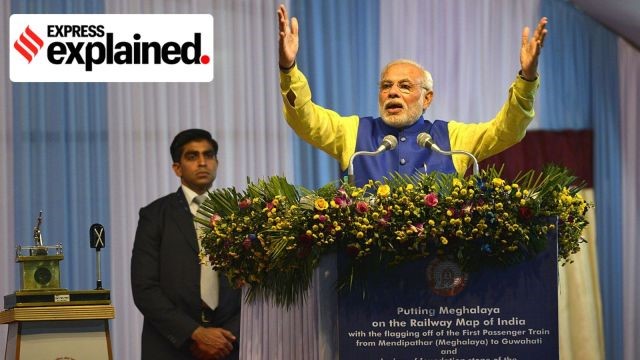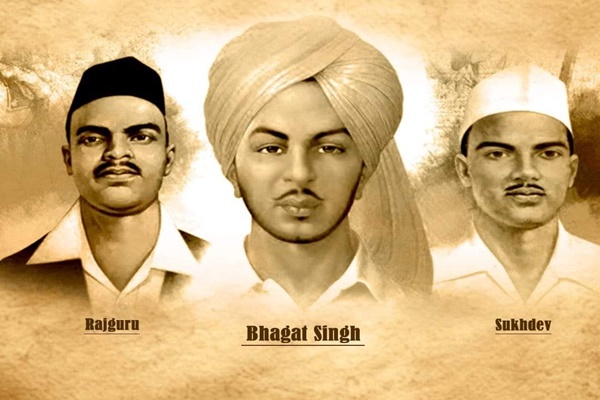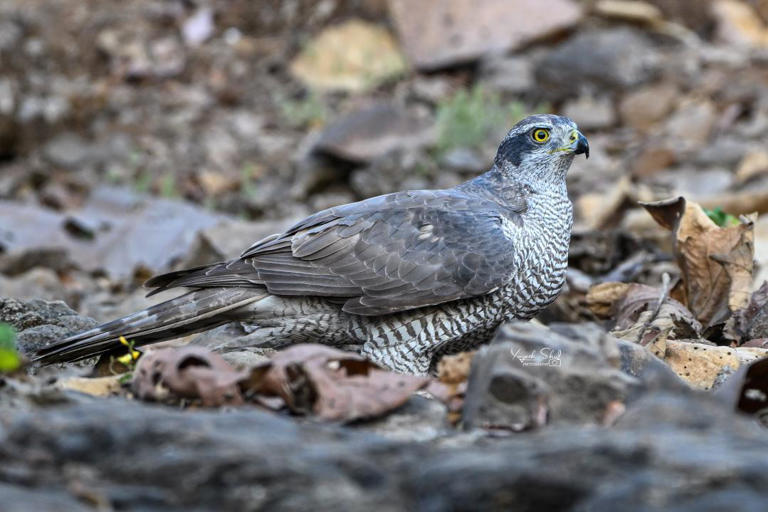RBI’s 6th Remittance Survey (2023–24)
- 24 Mar 2025
In News:
India remains the world’s top recipient of remittances, with total inward remittances doubling from USD 55.6 billion in 2010–11 to USD 118.7 billion in 2023–24, as per the Reserve Bank of India’s Sixth Round of the Remittances Survey.
Shift in Sources of Remittances
- A significant trend in 2023–24 is the growing dominance of Advanced Economies (AEs) over traditional Gulf sources.
- The United States emerged as the largest contributor with a 27.7% share, followed by the United Arab Emirates (UAE) at 19.2%.
- AEs including the UK, Singapore, Canada, and Australia now account for over 50% of India’s total remittance inflows.
- The UK’s share increased notably from 3.4% (2016–17) to 10.8% (2023–24).
- Australia contributed 2.3%, reflecting rising skilled migration.
- The Gulf Cooperation Council (GCC) countries (UAE, Saudi Arabia, Kuwait, Qatar, Oman, Bahrain) collectively contributed 38%, a decline from 47% in 2016–17.
Reasons for the Shift
- Robust Job Markets in AEs: High-paying jobs for skilled Indian migrants in the US, UK, Canada, and Australia.
- UK-India Migration and Mobility Partnership (MMP) tripled Indian migration to the UK from 76,000 in 2020 to 250,000 in 2023.
- Favorable immigration policies in Canada (Express Entry) and Australia boosted skilled migration.
- Declining Opportunities in GCC:
- Post-pandemic return of Indian migrants and reduced demand for low-skilled labor due to automation and economic diversification.
- Nationalization policies (e.g., Nitaqat in Saudi Arabia, Emiratization in UAE) favor local employment.
- Changing Migration Patterns:
- Southern states (Kerala, Tamil Nadu, Andhra Pradesh, Telangana) now prefer AEs due to higher education levels.
- Northern states (Uttar Pradesh, Bihar, Rajasthan) still send migrants to GCC, but limited by lower skill levels.
- Rise in Education-Driven Migration:
- Many Indian students pursue higher education abroad and stay back for employment.
- Indian students abroad: Canada (32%), US (25.3%), UK (13.9%), Australia (9.2%).
State-Wise Remittance Distribution (2023–24)
- Maharashtra: 20.5%
- Kerala: 19.7%
- Tamil Nadu: 10.4%
- Telangana: 8.1%
- Karnataka: 7.7%
- Notable increases observed in Punjab and Haryana.
Mode of Transfers
- The Rupee Drawing Arrangement (RDA) remains the dominant channel.
- Other channels include direct Vostro transfers and fintech platforms.
- Digital transactions account for 73.5% of remittance flows.
Inner Line Permit (ILP)

- 24 Mar 2025
In News:
The Inner Line Permit (ILP) system plays a significant role in regulating entry into certain states of India's Northeast. Originally derived from the Bengal Eastern Frontier Regulation (BEFR) of 1873, the ILP aims to protect indigenous communities and preserve their cultural identity by regulating the movement of non-residents into restricted areas. This system requires Indian citizens who are not permanent residents of these states to obtain an ILP to enter and stay in these areas for a limited period.
Currently, four states—Arunachal Pradesh, Nagaland, Mizoram, and Manipur—require an ILP for entry. In recent years, the ILP system has become a topic of contention in Meghalaya, where local opposition to developmental projects, particularly railway expansion, has intensified.
What is the Inner Line Permit (ILP)?
The ILP is an official travel document issued by the respective state governments and regulates the entry of Indian citizens into restricted tribal areas. The system's primary aim is to safeguard indigenous communities from exploitation and prevent land alienation.
- Legal Basis: The Bengal Eastern Frontier Regulation (BEFR), 1873, introduced by the British, created an "Inner Line" to restrict the movement of outsiders. The Foreigners (Protected Areas) Order, 1958 and Foreigners (Restricted Areas) Order, 1963 further delineated areas where foreigners and Indian citizens from other states require special permits to enter.
- Difference Between ILP and PAP: The Inner Line Permit (ILP) applies to Indian citizens in certain northeastern states, while the Protected Area Permit (PAP) is for foreigners wishing to enter restricted areas, including parts of Arunachal Pradesh, Sikkim, Himachal Pradesh, J&K, and Rajasthan.
Current Status of Rail Connectivity in Meghalaya
Meghalaya has limited rail connectivity, with Mendipathar in North Garo Hills being the only operational railway station since 2014. Passenger services run daily between Mendipathar and Guwahati, and the station recently received its first freight shipment. However, several proposed railway projects in the state face significant opposition from local groups, particularly in the Khasi and Jaintia Hills.
The Northeast Frontier Railways (NFR) had planned three key projects in Meghalaya:
- Tetelia-Byrnihat Railway Line (21.5 km connecting Assam to Meghalaya)
- Byrnihat-Shillong Railway Line (108.76 km)
- Chandranathpur-Jowai Railway Line (connecting Assam to Jowai)
These projects are now at risk of being shelved due to local resistance, particularly from Khasi pressure groups such as the Khasi Students' Union (KSU).
Opposition to Railway Projects in Meghalaya
The opposition to these railway projects stems from fears of an influx of “outsiders” into the state, potentially threatening the cultural identity and livelihood of indigenous communities. The Khasi Students' Union (KSU) has been opposed to the extension of railway lines into the Khasi Hills since the 1980s, arguing that such projects would facilitate large-scale migration and overwhelm local populations. The group's concerns have now expanded to include other regions, such as the Jaintia Hills, where protests have emerged against the proposed Chandranathpur-Jowai line.
The KSU has long advocated for the introduction of the ILP system in Meghalaya to prevent non-residents from settling in the state. They argue that the ILP would serve as a safeguard against uncontrolled migration, offering a mechanism to regulate entry, especially at railway stations, where people can be monitored and restricted from staying beyond their designated period.
The KSUemphasized that while the group does not oppose railway development in principle, it seeks safeguards like the ILP to ensure that the state's indigenous communities do not become minorities.
Economic Considerations and Government Response
While the local opposition is strong, there is also significant support for railway connectivity, particularly from economic perspectives. Chief Minister Conrad Sangma has argued that improved rail connectivity would reduce logistical costs and facilitate the movement of goods, benefiting both the state's economy and its local entrepreneurs. Toki Blah, a political commentator, noted that railway expansion could lower the cost of goods, particularly in a state where much of the population depends on small-scale agriculture and service-based industries.
Additionally, representatives from the Garo Hills, another major tribal region in Meghalaya, have advocated for expanding existing rail links from Mendipathar to Baghamara in the South Garo Hills, citing the need for better transportation infrastructure.
Shaheed Diwas

- 24 Mar 2025
In News:
On Shaheed Diwas (23rd March), the nation commemorates the supreme sacrifice of three iconic freedom fighters—Bhagat Singh, Shivaram Rajguru, and Sukhdev Thapar. Prime Minister Narendra Modi paid tribute to these martyrs, remembering their unwavering resolve and courageous efforts in the struggle for India's independence. This day marks the execution of these three revolutionaries by British colonial authorities in Lahore Jail in 1931.
Background of the Martyrs
The trio was convicted for their involvement in the 1928 Lahore Conspiracy Case, which revolved around the killing of J.P. Saunders, a British officer. The incident occurred after Saunders was mistakenly identified as Superintendent James Scott, who was blamed for the death of Lala Lajpat Rai during a protest against the Simon Commission. The execution of these freedom fighters on 23rd March 1931 became a symbol of their sacrifice for the cause of India’s freedom.
The three were members of the Hindustan Socialist Republican Association (HSRA), a revolutionary group that sought to overthrow British rule through armed struggle. Their fearless actions continue to inspire the nation to this day.
Brief Profiles of the Martyrs
- Bhagat Singh (1907–1931): Born in Punjab, Bhagat Singh was a prominent revolutionary who played a key role in the fight against British rule. He is remembered for his bold actions, such as the bombing of the Central Legislative Assembly in 1929, and his fearless stand against colonial oppression. His execution at the age of 23 became a catalyst for the freedom struggle.
- Shivaram Rajguru (1908–1931): Born in Maharashtra, Rajguru was a committed revolutionary who, along with Bhagat Singh, was involved in the assassination of J.P. Saunders. He was known for his dedication to the cause of armed resistance and his determination to fight colonial oppression. Rajguru was executed at the age of 23.
- Sukhdev Thapar (1907–1931): A key figure in mobilizing youth for the freedom struggle, Sukhdev was born in Punjab. He played a significant role in the activities of the HSRA and was instrumental in organizing protests and revolutionary activities. His execution, like that of his fellow revolutionaries, became a symbol of the ultimate sacrifice for India's freedom.
Financial Assistance for Promotion of Art and Culture
- 24 Mar 2025
In News:
The Ministry of Culture has implemented several schemes aimed at supporting the growth and preservation of India's rich art and cultural heritage. One of the key initiatives is the ‘Financial Assistance for Promotion of Art and Culture’ Scheme, a Central Sector Scheme that provides financial support to eligible cultural organizations across the country. Below is an overview of the scheme, its components, and eligibility criteria.
Eligibility Criteria for Organizations
To be eligible for assistance under this scheme, cultural organizations must meet the following criteria:
- Registered as a society, trust, or not-for-profit company for at least three years.
- Registered on the NGO Darpan Portal of NITI Aayog.
- Have a primary focus on cultural activities.
- Submit audited financial statements for the last three years.
- Have filed Income Tax returns during the last three years.
Sub-Components of the Scheme
The scheme consists of eight sub-components, each designed to support different aspects of art and culture across India.
- Financial Assistance to Cultural Organizations with National Presence
- Objective: To support large cultural organizations with a nationwide presence.
- Grant Amount: Up to Rs. 1 crore (may increase to Rs. 5 crore in exceptional cases).
- Cultural Function & Production Grant (CFPG)
- Objective: Provides financial aid for cultural events like seminars, conferences, research, workshops, festivals, exhibitions, and productions of dance, drama, and music.
- Grant Amount: Up to Rs. 5 lakh (may increase to Rs. 20 lakh in exceptional cases).
- Financial Assistance for the Preservation & Development of Cultural Heritage of the Himalayas
- Objective: To promote and preserve the cultural heritage of the Himalayan region, including Jammu & Kashmir, Himachal Pradesh, Uttarakhand, Sikkim, and Arunachal Pradesh.
- Grant Amount: Up to Rs. 10 lakh per year (may increase to Rs. 30 lakh in exceptional cases).
- Financial Assistance for the Preservation & Development of Buddhist/Tibetan Organizations
- Objective: To support Buddhist/Tibetan organizations, including monasteries, in preserving and developing Buddhist/Tibetan culture and traditions.
- Grant Amount: Up to Rs. 30 lakh per year (may increase to Rs. 1 crore in exceptional cases).
- Financial Assistance for Building Grants including Studio Theatres
- Objective: To provide financial support for creating cultural infrastructure, such as studio theatres, auditoriums, and rehearsal halls, along with providing essential facilities like lighting, acoustics, and sound systems.
- Grant Amount: Up to Rs. 50 lakh in metro cities and Rs. 25 lakh in non-metro cities.
- Financial Assistance for Allied Cultural Activities
- Objective: To assist in the creation of assets that enhance the audio-visual spectacle for live performances and cultural activities.
- Grant Amount:
- Audio: Up to Rs. 1 crore.
- Audio + Video: Up to Rs. 1.5 crore (includes 5 years of operation and maintenance costs).
- Intangible Cultural Heritage
- Objective: To safeguard and promote India’s intangible cultural heritage, supporting institutions, groups, and NGOs involved in relevant activities.
- Grant Amount: Varies based on specific activities.
- Domestic Festivals and Fairs
- Objective: To assist in organizing RashtriyaSanskritiMahotsavs (National Culture Festivals) across India, engaging artists and showcasing various cultural traditions.
- Grant Amount: Event-based assistance; Rs. 38.67 crore was released in the last three years for these events.
Implementation and Monitoring
The Ministry of Culture closely monitors the effective utilization of funds under this scheme through:
- Utilization Certificates and audited financial statements.
- On-site physical inspections to assess the progress and impact of the funded projects.
- Regular oversight ensures that the assistance is used for its intended purpose and meets the objectives of cultural promotion and preservation.
Support for Individual Artists and Cultural Research
In addition to the above schemes, the Ministry of Culture also supports individual artists and cultural researchers through the ‘Scheme of Scholarship and Fellowship for Promotion of Art and Culture’. This scheme includes the following components:
- Award of Scholarships to Young Artists (SYA)
- Objective: To support young artists aged 18-25 years in various cultural fields.
- Duration: 2 years.
- Eligibility: Applicants should have undergone at least 5 years of training under a recognized guru or institution.
- Award of Senior/Junior Fellowships
- Senior Fellowship: For individuals 40 years and above to support cultural research.
- Junior Fellowship: For individuals 25-40 years for cultural research.
- Up to 400 Fellowships are awarded annually.
- Tagore National Fellowship for Cultural Research
- Objective: To provide funding for cultural research under two categories: Tagore National Fellowship and Tagore Research Scholarship.
- Selection: Fellows and scholars are selected by the National Selection Committee.
- Project Grants for Research in Performing Arts
- Objective: To provide financial assistance to individuals conducting research in performing arts.
Eurasian Goshawk sighting at Tansa Wildlife Sanctuary

- 24 Mar 2025
In News:
A significant wildlife discovery has been made at Tansa Wildlife Sanctuary, Maharashtra, where the Eurasian goshawk, a large bird of prey, was spotted for the first time. This marks the first documented instance of the Eurasian goshawk in the sanctuary, although the species has been previously recorded in Maharashtra three times.
About the Eurasian Goshawk
- Scientific Name: Accipiter gentilis
- Description: A powerful raptor known for its short, broad wings and long tail.
- Habitat: Dense forests, particularly coniferous and mixed woodlands across Europe, Asia, and parts of North America.
- Winter Visitor: The Eurasian goshawk is a winter visitor to India, making this sighting at Tansa particularly noteworthy.
Tansa Wildlife Sanctuary
- Located in the foothills of the Western Ghats in Thane District, Maharashtra, Tansa Wildlife Sanctuary covers 320 sq. km.
- Positioned approximately 90 km northeast of Mumbai, it serves as a vital catchment area for Tansa Lake and is bordered by the Tansa and Vaitarna rivers.
Flora and Fauna
The sanctuary boasts a rich diversity of flora and fauna, including:
- 200 bird species
- 54 animal species, including endangered animals like:
- Panther
- Hyena
- Barking Deer
- Notable species include:
- Critically Endangered vultures
- Vulnerable Pallas’s fish-eagle
Vegetation and Landscape
- Southern Tropical Moist Deciduous Forest with patches of Evergreen Forest.
- Flora includes trees like Kalamb, Bibla, Khair, Hed, Teak, and Bamboo.
Avian Discoveries
Tansa Wildlife Sanctuary is also renowned for its avian discoveries, such as the critically endangered Forest Owlet, which was first documented here in 2014. This discovery highlighted the sanctuary’s significance for bird conservation.
Conservation Efforts and Ecological Role
The sighting of the Eurasian goshawk further emphasizes the critical need for ongoing conservation efforts at Tansa Wildlife Sanctuary.
Role of the Eurasian Goshawk in Ecosystem
As a bird of prey, the Eurasian goshawk plays a vital role in maintaining ecological balance by controlling populations of smaller mammals and birds.
Though listed as "Least Concern" on the IUCN Red List, the Eurasian goshawk’s presence underscores the sanctuary’s importance in the region’s biodiversity.
